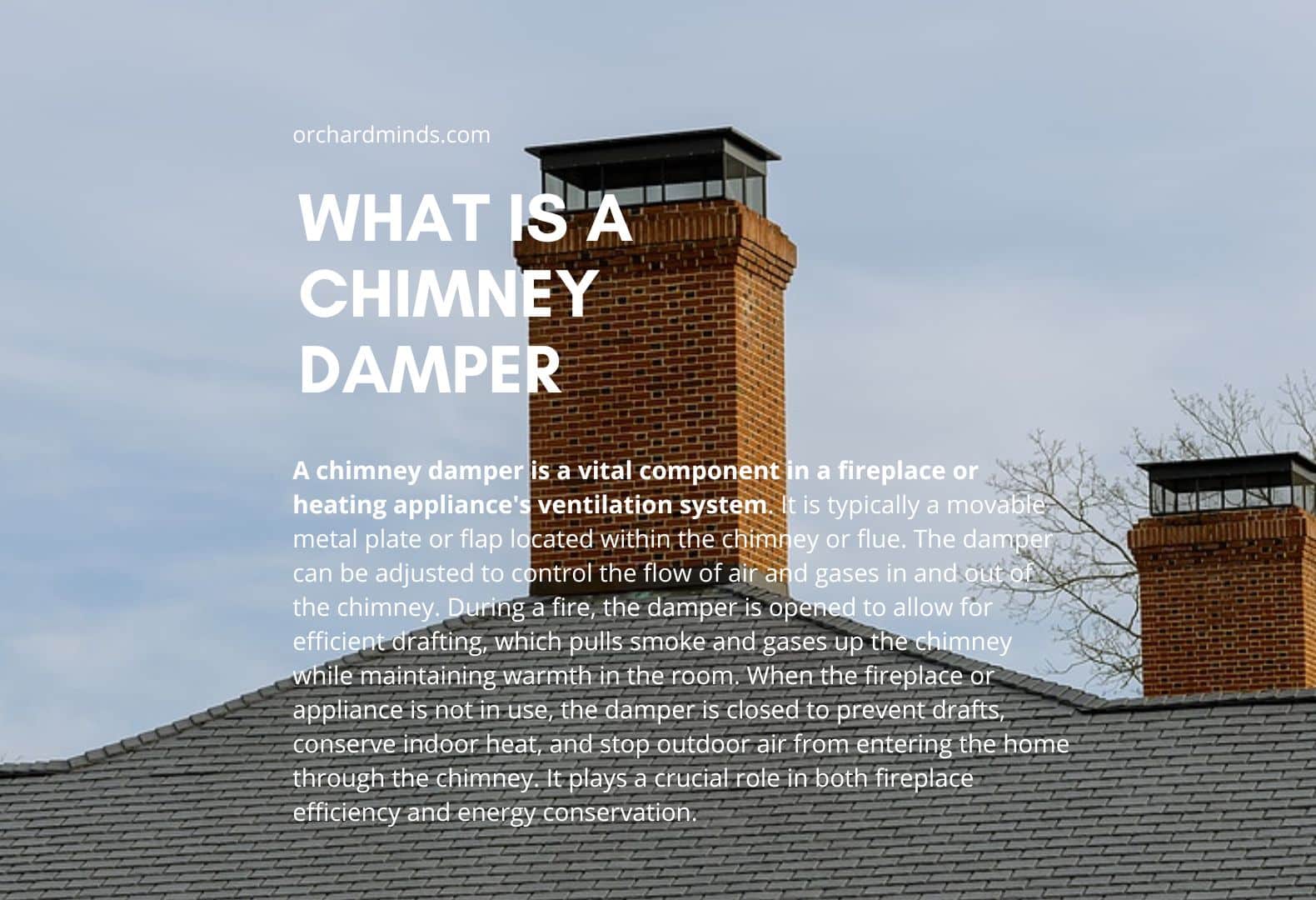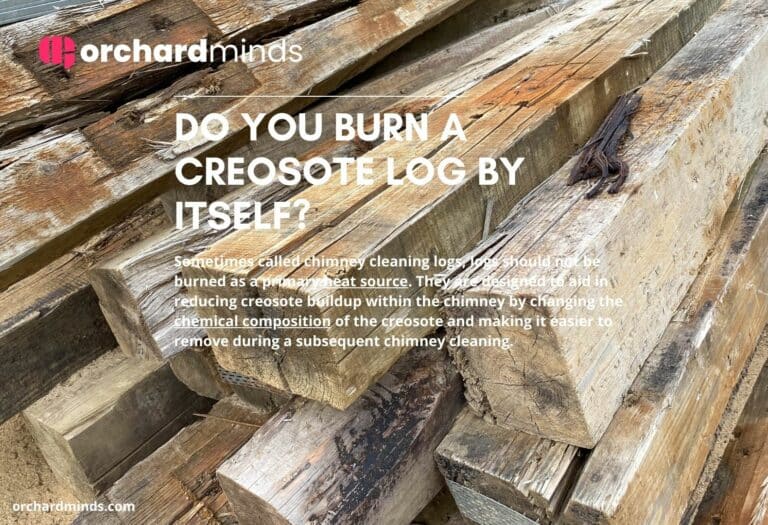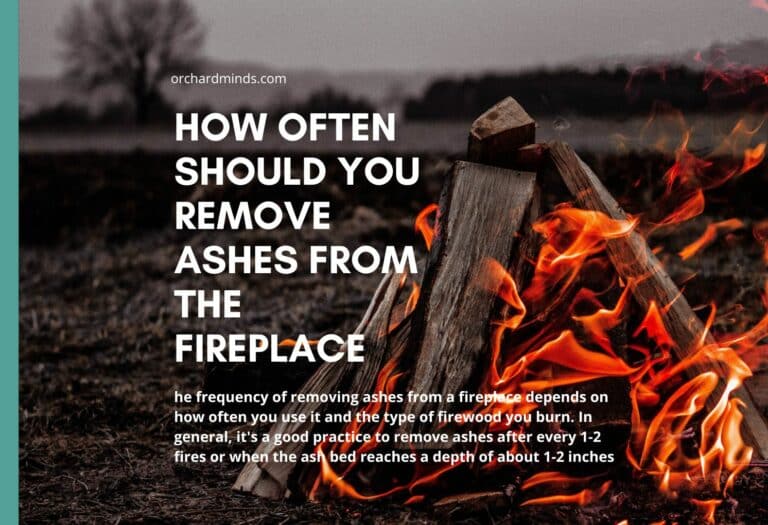What is a chimney damper? A chimney damper is a vital component in a fireplace or heating appliance’s ventilation system. It is typically a movable metal plate or flap located within the chimney or flue. The damper can be adjusted to control the flow of air and gases in and out of the chimney.
During a fire, the damper is opened to allow for efficient drafting, which pulls smoke and gases up the chimney while maintaining warmth in the room. When the fireplace or appliance is not in use, the damper is closed to prevent drafts, conserve indoor heat, and stop outdoor air from entering the home through the chimney. It plays a crucial role in both fireplace efficiency and energy conservation.
Throat Dampers
Throat dampers are a specific type of chimney damper often found near the top of the firebox, just above the firebox opening. They are typically made of metal and are hinged to allow for adjustment. Throat dampers control the airflow and regulate the draft in the chimney. When the fireplace is not in use, they are closed to seal off the chimney, preventing heat loss and drafts. However, they are less efficient than top-sealing dampers in terms of preventing heat loss, and many homeowners are replacing throat dampers with more modern, airtight options to improve energy efficiency.
Chimney Cap Dampers
Chimney cap dampers, also known as top-sealing dampers, are a type of chimney damper installed at the top of the chimney, typically just above the chimney crown. They consist of a metal cap with a movable damper plate. Unlike traditional throat dampers, chimney cap dampers seal off the entire chimney’s top when not in use, preventing drafts, rain, debris, and animals from entering. They are known for their energy efficiency as they effectively minimize heat loss and provide a superior seal, making them a popular choice for homeowners aiming to improve the efficiency and safety of their fireplace or heating appliance.
Inlet Dampers
Inlet dampers, sometimes referred to as inlet air dampers, are devices used in heating and ventilation systems to control the flow of outdoor air into the system. These dampers are often located at the inlet or air intake of an HVAC system or combustion appliance. Inlet dampers can be adjusted to regulate the amount of fresh air brought into the system, which is essential for maintaining proper combustion and ensuring energy efficiency. They play a crucial role in controlling the air-to-fuel ratio in combustion systems. They can improve indoor air quality by facilitating ventilation and filtration.
Stovepipe Dampers
Stovepipe dampers, also known as flue dampers or pipe dampers, are small adjustable plates or discs installed within the single-wall stovepipe connecting a wood-burning stove to the chimney. These dampers are used to control the airflow and draft in the stovepipe. By adjusting the damper, you can regulate the intensity of the fire in the stove and influence the rate of heat output. Stovepipe dampers can help optimize combustion efficiency and ensure that the furnace operates at its most effective and safest levels. However, their use has become less familiar with the advent of more modern, airtight wood-burning stoves and the preference for chimney dampers or top-sealing dampers for controlling draft and heat loss.
Inflatable Damper Seals
Inflatable damper seals are innovative devices designed to create an airtight seal within chimneys or ventilation systems. They consist of a flexible, inflatable bladder that can be inserted into the chimney or duct. When inflated, these seals block the passage completely, preventing the exchange of air, heat loss, or the entry of drafts and external elements. Inflatable damper seals are particularly useful for improving energy efficiency and indoor air quality in homes, as they create a more airtight barrier compared to traditional throat dampers. They are often used as a modern alternative for enhancing the performance and safety of fireplaces and heating appliances.
What materials are chimney dampers made from?
Chimney dampers are made from a variety of materials, each with its own set of advantages and considerations:
- Cast Iron: Cast iron dampers are durable and have been a traditional choice for many years. They can withstand high temperatures and are resistant to corrosion. However, they can be heavy and may require more effort to open and close.
- Steel: Steel dampers are commonly used and come in various grades, such as galvanized steel or stainless steel. Stainless steel is particularly popular because it is highly resistant to corrosion and can endure high temperatures. Steel dampers are relatively lightweight and easy to operate.
- Aluminum: Aluminum dampers are lightweight and resistant to corrosion, making them a good choice for many applications. They are often found in more modern, high-efficiency heating appliances.
- Ceramic Fiber: Some dampers use ceramic fiber insulation to provide a high-temperature seal. These are often used in high-efficiency or zero-clearance fireplaces.
- Silicone Rubber: Some modern dampers feature silicone rubber seals for added airtightness. These are known for their effectiveness in preventing heat loss.
- Castable Refractory: Castable refractory dampers are designed for extreme temperatures and are used in some commercial or industrial applications. They can withstand very high heat but are less common in residential settings.
The choice of material depends on factors like the type of fireplace or heating appliance, the chimney’s intended use, the expected temperature range, and the homeowner’s preferences. Regardless of the material, proper installation, maintenance, and regular inspections are essential for safe and efficient chimney damper operation.
Why do you need a chimney damper?
Chimney dampers serve several crucial functions in a home’s heating and ventilation system. They primarily help regulate the airflow and draft within the chimney, which, in turn, controls the combustion process and the heat output of the fireplace or heating appliance. Dampers also prevent unwanted drafts, rain, debris, and animals from entering the chimney when it’s not in use. Additionally, they contribute to energy efficiency by reducing heat loss when the heating appliance is idle. Properly functioning chimney dampers are essential for safety, efficiency, and comfort in homes with fireplaces or wood-burning stoves.
Common chimney damper problems
Common chimney damper problems include:
- Stiff Operation: Dampers can become difficult to open or close, making them challenging to adjust correctly.
- Corrosion: Steel dampers are susceptible to rust and corrosion over time, especially in damp conditions.
- Warped or Damaged Dampers: Harsh weather, chimney fires, or general wear and tear can lead to warped or damaged damper components, affecting their sealing capabilities.
- Creosote Buildup: Creosote deposits from wood-burning fires can accumulate on the damper, making it less effective and increasing the risk of blockages.
- Missing or Disconnected Components: In some cases, dampers may have lost or disconnected parts, rendering them inoperable.
- Deteriorated Seals: The seals or gaskets on the damper may deteriorate over time, allowing drafts and heat loss.
Regular chimney inspections and maintenance can help identify and address these issues, ensuring the damper functions appropriately and contributes to the safety and efficiency of the heating system.
Are there different levels of quality in chimney dampers?
Yes, there are different levels of quality in chimney dampers. The rate of drag can vary based on factors such as the materials used, design, construction, and the manufacturer’s reputation. High-quality dampers are typically made from durable materials like stainless steel, have airtight seals, and may incorporate features to improve ease of use and longevity. Lower-quality dampers may use cheaper materials, have less effective sealing, and may not withstand extreme temperatures or weather conditions. For optimal performance, it’s advisable to invest in a high-quality damper, as it contributes to safety, energy efficiency, and long-term reliability in your chimney system.
Things to remember about chimney dampers
Here are some key things to remember about chimney dampers:
- Regular Inspection: Chimney dampers should be inspected as part of routine chimney maintenance to ensure they are in good working order.
- Proper Sizing: Dampers come in various sizes, so it’s crucial to select one that matches your chimney’s dimensions and the type of heating appliance you have.
- Maintenance: Dampers, like any component of your chimney, require periodic cleaning and maintenance to operate effectively.
- Energy Efficiency: Using a well-sealed damper when the fireplace or stove is not in use can prevent heat loss, contributing to energy efficiency.
- Safety: A properly functioning damper helps ensure safe combustion by controlling the draft and airflow within the chimney.
- Material Choice: Choose a damper made from durable and corrosion-resistant materials, like stainless steel, for better longevity and performance.
- Professional Assistance: When in doubt, or if you encounter problems with your damper, consult a qualified chimney sweep or technician for advice and service to ensure safe and efficient operation.




Leave a Comment